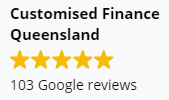Refinancing.
It’s the little known way to save money, trim your mortgage and ultimately, get a better deal. Going it alone can be daunting, but with a mortgage broker leading the rebellion, refinancing can be easier than ever.

Why refinance?
Save more, spend less. It’s that simple. If you want to cut to the chase, get in touch today. Otherwise, read more about the benefits of refinancing here.
01.
Get down with low rates
With interest rates breaking all the records, there's never been a better time to switch lenders. By refinancing, you will lock in a loan with a lower rate, which will save you a heap of cash in the long run.
02.
More bells, better whistles
The features that come with standard home loans have come a long way. Switching to a loan that allows you to make fortnightly payments over monthly, or loans that don't penalise you for making extra payments. Some even come with offset accounts, helping you save even more.
03.
Debt consolidation
Refinancing will help you roll your credit card debts and other personal loans into one manageable sum, at a lower rate. Since this debt is secured by your home loan, you may pay less interest. That means less debt, and more savings!
The right time to refinance?
When it comes to refinancing, timing is everything. Refinance when rates are high and you could end up paying more. Do it when rates are low, and you’ll come out on top. Here’s how to know if you should go ahead or hold off for a little while.
- If your credit rating improves
If your credit rating is too hot for your current loan to handle, refinancing could help you secure a better deal. If you have a bad debt history, it might be in your best interest to wait until you’ve worked on your financial fitness before you refinance.
- Strong economic climate
A strong economic climate can supercharge your hopes of saving money on your home loan. During economic growth interest rates tend to dip, meaning if you refinance to a home loan at a lower interest rate, you could save big.
- Home loan expiration dates
It pays to keep track of the expiry date of your current home loan. If your lock in period is almost up, it’s probably a good time to think about refinancing as you won’t need to pay your bank’s break up costs.
How to refinance?
So, how exactly do you ditch your current bank and find a new financial partner? Don’t sweat it. With a mortgage broker working for you, three steps is all it takes.
01.
Check your history
We'll kick things off by working with you to understand your goals, current financials, review your mortgage documents and look into any exit fees or other sneaky extra costs.
02.
Compare the market
We'll scope over 30 banks and lenders to get you a lower rate. We'll even consider loan features, fixed or variable rates, and options such as an offset account.
03.
It's business time
We'll scope over 30 banks and lenders to get you a lower rate. We'll even consider loan features, fixed or variable rates, and options such as an offset account.
Loan types and features.
Variable Rate Loan
As the name suggests , the interest rate can change over the life of the loan . This gives you flexibility , but can also leave you open to rate rises. These loans also offer the option of additional repayments and redraw, as well as offset accounts.
Fixed Rate Loan
Basically, this is the opposite of a variable rate loan. Your interest rate and repayments will stay the same during the fixed term, no matter what. So no surprises. You can’t make extra repayments during the fixed term though, so it’s worth thinking about a split loan if you’re planning to pay extra.
Split Loan
The best of both worlds – you’re able to fix part of your loan, while leaving the rest variable.
Packaged Loan
Professional packages offer discounts on standard variable and fixed rates, the waiving of fees, and in some cases, great deals on other products from the same lender. A packaged loan usually comes with one annual fee for the bundled products.


